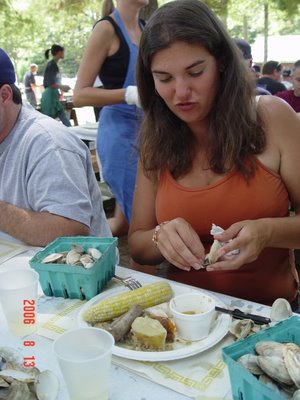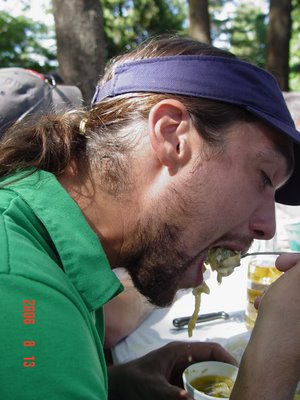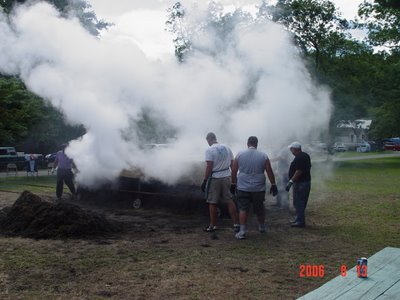Chowing down on some clams. You can see corn, sausages, potatoes, butter, and a big ole basket o' clams.


Karl takes the biggest bite of clams ever.

The clams coming out of the bake.

Steam pours from the rocks, and from the huge heaps of seaweed. You can see some on the left.
